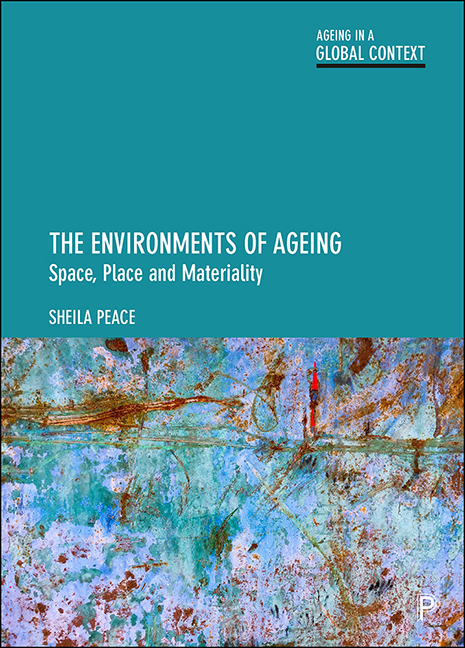Book contents
- Frontmatter
- Dedication
- Contents
- List of figures and tables
- Research summaries
- List of acronyms
- About the author
- Acknowledgements
- Series editors’ preface
- Preface: understanding the structure
- 1 Person and environment
- 2 Theoretical development
- 3 The global context
- 4 Environmental living
- 5 Housing in later life
- 6 Housing histories, housing options
- 7 Alternative environments: specialised housing (with care)
- 8 Care home living: a form of long-term care
- 9 Methodological development
- 10 Rethinking the spatiality of ageing
- Glossary of terms
- References
- Index
7 - Alternative environments: specialised housing (with care)
Published online by Cambridge University Press: 15 September 2022
- Frontmatter
- Dedication
- Contents
- List of figures and tables
- Research summaries
- List of acronyms
- About the author
- Acknowledgements
- Series editors’ preface
- Preface: understanding the structure
- 1 Person and environment
- 2 Theoretical development
- 3 The global context
- 4 Environmental living
- 5 Housing in later life
- 6 Housing histories, housing options
- 7 Alternative environments: specialised housing (with care)
- 8 Care home living: a form of long-term care
- 9 Methodological development
- 10 Rethinking the spatiality of ageing
- Glossary of terms
- References
- Index
Summary
Introduction
Motivation, agency and choice are key when people make decisions about changing where they live. The concept of option recognition was introduced as a forerunner to this decision, for some being part of rightsizing their accommodation or changing their location, for others a consequence or concern for their health and well-being; the reasons are entangled. As already acknowledged, older people's housing is part of the public debate about intergenerational relations, the lack of family housing and financial transfers. Independent Age (2016) report that talking to the family about housing, care and end of life are some of the most difficult conversations older people may have that may encourage change. This chapter focuses on alternative environments of housing and care that for some are the outcome of that change.
While discussions may range from good ideas to recognising insufficient knowledge about alternatives, the ability or motivation to move may never be considered by those who decide to stay put. Living with others who are non-family members in a form of communal living is experienced by many across their lives, yet they may not make the comparison with arrangements in later life. Heywood et al, (2002, p 118) comment on collective living in student halls of residence, shared residences in early adulthood, assisted living in later life and (in advanced old age) the experience of residential care and nursing homes. Nevertheless, to date a relatively small percentage of people aged 65 and over in the UK make a change to age-related housing (with care). Chapters 7 and 8 offer parallel scenarios for those who live in environments where age and ageing form a commonality, and where key experiences are coping with transition and developing a new lifestyle. When people move, either as a couple or alone, to different forms of housing (with care), their motivation may be intentional, purposeful and planned, or may occur as a consequence of ageing within particular circumstances – financial, health related, familial – that influence the outcome. The term (with care) is put in parenthesis as the need varies with time and place.
This chapter gives a brief history of housing (with care), also known as specialised housing (Park and Porteus, 2018), seen as an alternative to the care home that is less institutionalised and focused on independent living (Heywood et al, 2002, pp 118–36).
- Type
- Chapter
- Information
- The Environments of AgeingSpace, Place and Materiality, pp. 153 - 192Publisher: Bristol University PressPrint publication year: 2022

